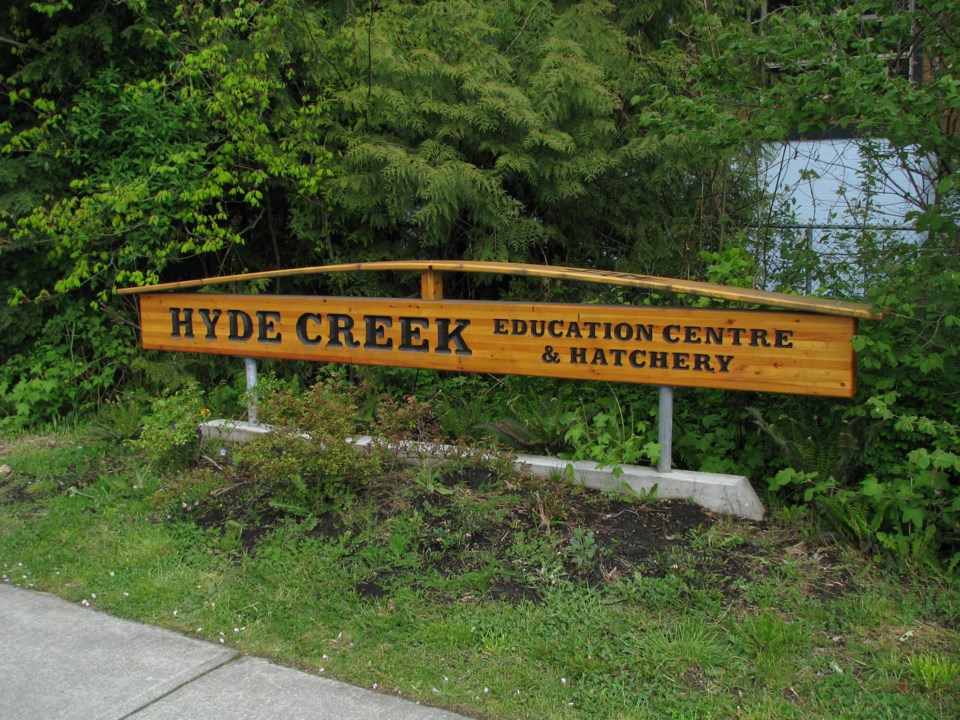The Editor,
Has anyone seen a ghost fish in Hyde Creek this year?
If so, there’s a good chance they’re not imagining it.
Coho salmon returning to Hyde Creek could be bringing a surprise with their annual migration. Some lucky observer might be able to spot an elusive "ghost fish."
How does this happen?
Where would they come from?
Are they dangerous?
The answer to all this can be found four years ago when this year’s fish were hatchlings in Hyde Creek.
If a ghost fish turns up this fall, a close look would show one of its fins is missing. The small "adipose" fin near the tail has been clipped off; a sure sign it was grown in a hatchery.
In November 2020, at the height of the COVID-19 pandemic, the work at Hyde Creek hatchery, on Coast Meridian Road in Port Coquitlam, continued as usual. Although volunteers had to follow all the recognized distancing rules, they continued gathering eggs for another season’s hatching.
But that year, nature threw a curve ball.
There’s a condition known as albinism that’s common among all members of the animal kingdom, but more common among birds, reptiles and fish.
Albinism is caused by a gene that makes the holder unable to produce melanin to colour various parts of their body. Creatures that have the gene are unaffected unless both their parents had the gene, then they have white skin, fur, scales, hair — anything that normally would have colour is white.
Looking a bit closer, the pigment in their eyes is pink.
As luck would have it, in 2020 a male and female coho that were captured at Hyde Creek hatchery both had the recessive gene. In another stroke of luck, those two were paired when the eggs of the female were fertilized. The result was all the eggs hatched from those two fish were albino. They represented close to 10 per cent of the coho hatched that year; a few hundred.
They stood out in stark contrast to the rest of their cohort.
Unfortunately, with the restrictions of COVID-19, the hatchery was unable to invite the public to see this phenomenon but the volunteers watched as that year’s crop grew and were finally released. In every other respect, they were perfectly normal, growing with the rest but they were easy to spot in the pond with their brilliant white exterior.
Now imagine a hungry heron stalking the creek looking for lunch.
How hard would it be to spot one of these coho fry?
Or, in the open ocean, how blind would an orca have to be to not see a surviving adult from miles away?
The coho might as well be flashing a neon sign with “Eat me! Eat me!” The hatchery volunteers expect the survival rate will be almost zero.
But that isn’t exactly zero, so this year would be the most likely time to see one of the ghost-white coho returning — if any have survived.
If you take your family down to the creek in the coming weeks to see the annual return of the salmon, keep a lookout for one of our ghost fish.
And if you see one, let the hatchery know, then give a cheer and two thumbs up.
You’re looking at another miracle of nature.
-Roland Shanks, treasurer, Hyde Creek Watershed Society





